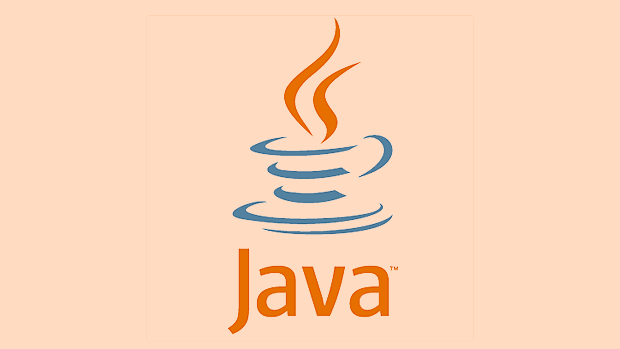There are two main ways to create threads in Java: inherit the Thread class and implement the Runnable interface. 1. Inheriting the Thread class is a direct way. By defining the class that inherits Thread and overriding the run() method, instantiating and calling start() to start the thread. However, this method is limited by the Java single inheritance mechanism and cannot directly share task objects; 2. Implementing the Runnable interface is more flexible. By implementing the run() method and passing the object into the Thread constructor, it supports multi-thread sharing of the same task object, avoids inheritance restrictions, and conforms to the idea of ??interface-oriented programming; in addition, anonymous internal classes or Lambda expressions can be used to simplify the code, which is suitable for simple tasks, but is not suitable for complex logic to avoid affecting readability. Either way, you need to pay attention to thread safety and resource competition issues.

There are two main ways to create threads in Java: inherit Thread class or implement the Runnable interface. These two methods have their own applicable scenarios, and which one is chosen depends on your specific needs. The specific usage methods and some precautions will be introduced below.

1. Inherit the Thread class
This is the most direct way to define the tasks executed by the thread by defining a class inherited from Thread and overriding its run() method.
Steps to use:

- Create a class to inherit
Thread - Rewrite
run()method - Instantiate this class and call
start()method to start the thread
class MyThread extends Thread {
public void run() {
System.out.println("Thread is running");
}
}
// When using:
MyThread thread = new MyThread();
thread.start();Note:
- Don't call the
run()method directly, it's just a normal method call and won't open a new thread. - Java does not support multiple inheritance. If other classes have been inherited,
Threadcannot be inherited.
2. Implement the Runnable interface
This method is more flexible and is suitable for scenarios where multiple threads share the same task object. Just implement the run() method in Runnable interface and pass the object as a parameter to the Thread constructor.

Steps to use:
- Define a class that implements
Runnable - Rewrite
run()method - Create
Threadobject and pass in theRunnableinstance - Call
start()to start the thread
class MyRunnable implements Runnable {
public void run() {
System.out.println("Task is executing");
}
}
// When using:
MyRunnable task = new MyRunnable();
Thread thread = new Thread(task);
thread.start();Advantages:
- More in line with the idea of ??interface-oriented programming
- Can avoid the limitation of single inheritance of Java
- Multiple threads can share the same
Runnableinstance, which facilitates resource sharing
3. Use anonymous internal classes to simplify the code (optional)
If you don't want to define classes separately, you can also use anonymous classes to quickly create threads, which is suitable for simple tasks.
new Thread(new Runnable() {
public void run() {
System.out.println("create threads through anonymous class");
}
}).start();Or you can also use Lambda expressions in Java 8:
new Thread(() -> System.out.println("Lambda method start thread")).start();Although the writing method is concise, it is not suitable for complex logic, otherwise it will affect the readability of the code.
Basically that's it. Creating threads is not difficult, but you should pay attention to thread safety, resource competition and other issues, especially when multiple threads operate to share data.
The above is the detailed content of How to create a thread in Java?. For more information, please follow other related articles on the PHP Chinese website!

Hot AI Tools

Undress AI Tool
Undress images for free

Undresser.AI Undress
AI-powered app for creating realistic nude photos

AI Clothes Remover
Online AI tool for removing clothes from photos.

Clothoff.io
AI clothes remover

Video Face Swap
Swap faces in any video effortlessly with our completely free AI face swap tool!

Hot Article

Hot Tools

Notepad++7.3.1
Easy-to-use and free code editor

SublimeText3 Chinese version
Chinese version, very easy to use

Zend Studio 13.0.1
Powerful PHP integrated development environment

Dreamweaver CS6
Visual web development tools

SublimeText3 Mac version
God-level code editing software (SublimeText3)

Hot Topics
 Difference between HashMap and Hashtable?
Jun 24, 2025 pm 09:41 PM
Difference between HashMap and Hashtable?
Jun 24, 2025 pm 09:41 PM
The difference between HashMap and Hashtable is mainly reflected in thread safety, null value support and performance. 1. In terms of thread safety, Hashtable is thread-safe, and its methods are mostly synchronous methods, while HashMap does not perform synchronization processing, which is not thread-safe; 2. In terms of null value support, HashMap allows one null key and multiple null values, while Hashtable does not allow null keys or values, otherwise a NullPointerException will be thrown; 3. In terms of performance, HashMap is more efficient because there is no synchronization mechanism, and Hashtable has a low locking performance for each operation. It is recommended to use ConcurrentHashMap instead.
 Why do we need wrapper classes?
Jun 28, 2025 am 01:01 AM
Why do we need wrapper classes?
Jun 28, 2025 am 01:01 AM
Java uses wrapper classes because basic data types cannot directly participate in object-oriented operations, and object forms are often required in actual needs; 1. Collection classes can only store objects, such as Lists use automatic boxing to store numerical values; 2. Generics do not support basic types, and packaging classes must be used as type parameters; 3. Packaging classes can represent null values ??to distinguish unset or missing data; 4. Packaging classes provide practical methods such as string conversion to facilitate data parsing and processing, so in scenarios where these characteristics are needed, packaging classes are indispensable.
 What are static methods in interfaces?
Jun 24, 2025 pm 10:57 PM
What are static methods in interfaces?
Jun 24, 2025 pm 10:57 PM
StaticmethodsininterfaceswereintroducedinJava8toallowutilityfunctionswithintheinterfaceitself.BeforeJava8,suchfunctionsrequiredseparatehelperclasses,leadingtodisorganizedcode.Now,staticmethodsprovidethreekeybenefits:1)theyenableutilitymethodsdirectly
 How does JIT compiler optimize code?
Jun 24, 2025 pm 10:45 PM
How does JIT compiler optimize code?
Jun 24, 2025 pm 10:45 PM
The JIT compiler optimizes code through four methods: method inline, hot spot detection and compilation, type speculation and devirtualization, and redundant operation elimination. 1. Method inline reduces call overhead and inserts frequently called small methods directly into the call; 2. Hot spot detection and high-frequency code execution and centrally optimize it to save resources; 3. Type speculation collects runtime type information to achieve devirtualization calls, improving efficiency; 4. Redundant operations eliminate useless calculations and inspections based on operational data deletion, enhancing performance.
 What is an instance initializer block?
Jun 25, 2025 pm 12:21 PM
What is an instance initializer block?
Jun 25, 2025 pm 12:21 PM
Instance initialization blocks are used in Java to run initialization logic when creating objects, which are executed before the constructor. It is suitable for scenarios where multiple constructors share initialization code, complex field initialization, or anonymous class initialization scenarios. Unlike static initialization blocks, it is executed every time it is instantiated, while static initialization blocks only run once when the class is loaded.
 What is the Factory pattern?
Jun 24, 2025 pm 11:29 PM
What is the Factory pattern?
Jun 24, 2025 pm 11:29 PM
Factory mode is used to encapsulate object creation logic, making the code more flexible, easy to maintain, and loosely coupled. The core answer is: by centrally managing object creation logic, hiding implementation details, and supporting the creation of multiple related objects. The specific description is as follows: the factory mode handes object creation to a special factory class or method for processing, avoiding the use of newClass() directly; it is suitable for scenarios where multiple types of related objects are created, creation logic may change, and implementation details need to be hidden; for example, in the payment processor, Stripe, PayPal and other instances are created through factories; its implementation includes the object returned by the factory class based on input parameters, and all objects realize a common interface; common variants include simple factories, factory methods and abstract factories, which are suitable for different complexities.
 What is the `final` keyword for variables?
Jun 24, 2025 pm 07:29 PM
What is the `final` keyword for variables?
Jun 24, 2025 pm 07:29 PM
InJava,thefinalkeywordpreventsavariable’svaluefrombeingchangedafterassignment,butitsbehaviordiffersforprimitivesandobjectreferences.Forprimitivevariables,finalmakesthevalueconstant,asinfinalintMAX_SPEED=100;wherereassignmentcausesanerror.Forobjectref
 What is type casting?
Jun 24, 2025 pm 11:09 PM
What is type casting?
Jun 24, 2025 pm 11:09 PM
There are two types of conversion: implicit and explicit. 1. Implicit conversion occurs automatically, such as converting int to double; 2. Explicit conversion requires manual operation, such as using (int)myDouble. A case where type conversion is required includes processing user input, mathematical operations, or passing different types of values ??between functions. Issues that need to be noted are: turning floating-point numbers into integers will truncate the fractional part, turning large types into small types may lead to data loss, and some languages ??do not allow direct conversion of specific types. A proper understanding of language conversion rules helps avoid errors.






